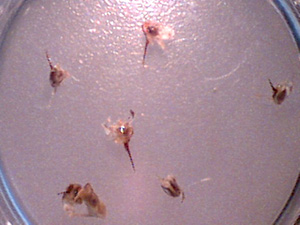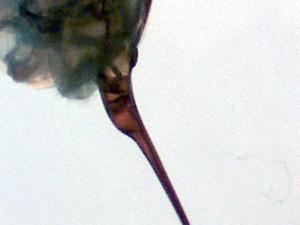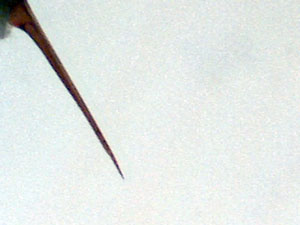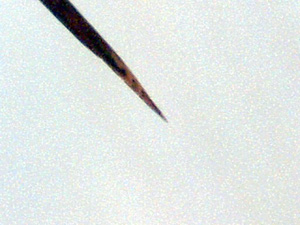A Round of Stingers for Everyone


These are the stingers that were still in the hood by the time I got to the washing machine. Since the hubby was home, I decided to find out in what kind of shape they could be after a night in the laundry basket. He dug out his Intel USB microscope and helped me get these shots. The stingers at left are at 10x. In real life, they are about the length of a hair you might pull out of your chin, if you were a girl with that kind of problem. Not that I am admitting anything.
The photo at the right is 60x, focusing on the glands that are still attached to the stinger. I have seen these things pulse well after they are no longer connected to the bee, and mechanical pressure can still get them to pump venom. Not that I recommend that, either. The trail of bee parts still attached to the stinger makes the little things hard to manipulate on the slide. For those in doubt, perhaps this can graphically demonstrate what's at stake for the bee in a decision to sting.


Here's a different stinger. Even bees are individuals, you can see from the difference in the bend of the stinger from the one above. Finally, here is a 200x closeup of the tip of a stinger, the most we can do here. You can see the ridges on the side, which I believe are the slits through which venom is delivered. The lighter colored area seems to be little hairs — or what's left of them — pointing the wrong way to keep the stinger from sliding back out. I'm pretty sure that yanking the stingers back out through the cloth removed most of the barb that holds the structure in place, fixing it in the skin and ensuring the destruction of the bee.
<< Home